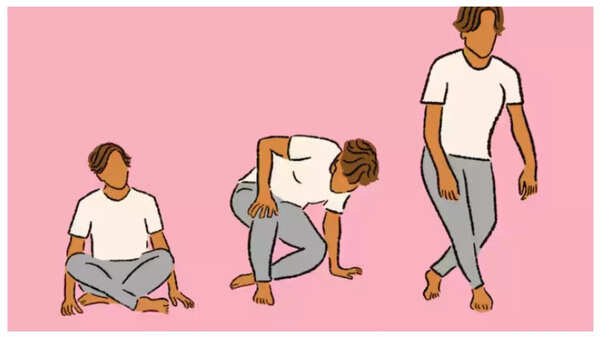
When we talk about longevity, it is not a linear phenomenon, and there is no one size fits all - some people just live longer than the others, and it depends on so many factors - age, weight, exercise level, genetics, and geography.
However, while there is no single test that can predict how long one will live, there are some tests that can give a rough idea whether you will live long or not. And one of those tests is the The Sitting-Rising Test. Let's take a look...What is the Sitting-Rising Test (SRT)The Sitting-Rising Test (SRT) is a simple physical test that can predict a person’s risk of death and overall longevity. It measures how well a person can sit down on the floor, and then rise back up without using their hands, knees, or other support.
This test gauges key aspects of physical fitness, such as muscle strength, flexibility, balance, and coordination, all of which are considered important for longevity.When was it developedThe Sitting-Rising Test was developed by Brazilian researchers in the 1990s to assess overall health in older adults. The test asks a person to sit down on the floor and then stand back up using as little support as possible. The evaluator scores the person’s performance out of 10 points—5 points for sitting down and 5 points for rising up.

Points are deducted for each time the person uses a hand, forearm, knee, or the side of the leg for support. An additional half-point is deducted if a person loses balance in the process. The goal is to complete the test smoothly without relying on other body parts.How is the test doneTo perform the test, the person starts standing. They are asked to sit down on the floor, typically cross-legged or in a comfortable position, and then stand back up.
In this test, speed is not important, the only struggle is to do the test as smoothly as possible.The test is done on a non-slippery surface, and the person can repeat the test a couple of times to try to improve their score. The best score from sitting and rising is combined to give the final score out of 10.How does it predict longevitySeveral studies have shown a strong link between SRT scores and mortality risk, especially from cardiovascular causes. The test reflects multiple components of physical health:Muscle strength and power: Needed to control movements and rise from the floor.Flexibility: Helps in smooth transitions between sitting and standing.Balance: Prevents falls and injuries.Coordination: Ensures efficient movement without support.Because these physical abilities tend to decline with age and chronic diseases, the SRT score acts as a marker of overall musculoskeletal fitness and functional health. People who score low on the test are more likely to have underlying health problems that increase their risk of death.What Does Your Score Mean?8 to 10 points: Excellent physical fitness and lower risk of mortality.5 to 7 points: Moderate fitness; some risk of health problems.0 to 4 points: Poor fitness; significantly higher risk of death, especially from heart-related causes.The test is especially useful for older adults, as it can identify those who might need interventions to improve strength, balance, and flexibility to reduce health risks.

Other testsUnlike tests that measure only aerobic fitness (like walking or running endurance), the SRT assesses non-aerobic fitness components that are crucial for daily activities and independence. It combines muscle strength, flexibility, balance, and coordination in one quick test without needing any equipment.Other tests related to longevity include standing on one leg for 10 seconds, grip strength, and the six-minute walk test. But the SRT is especially accurate, because it reflects whole-body functional fitness, which is a strong predictor of healthy aging.

 10 hours ago
52
10 hours ago
52




























 English (US)
English (US)